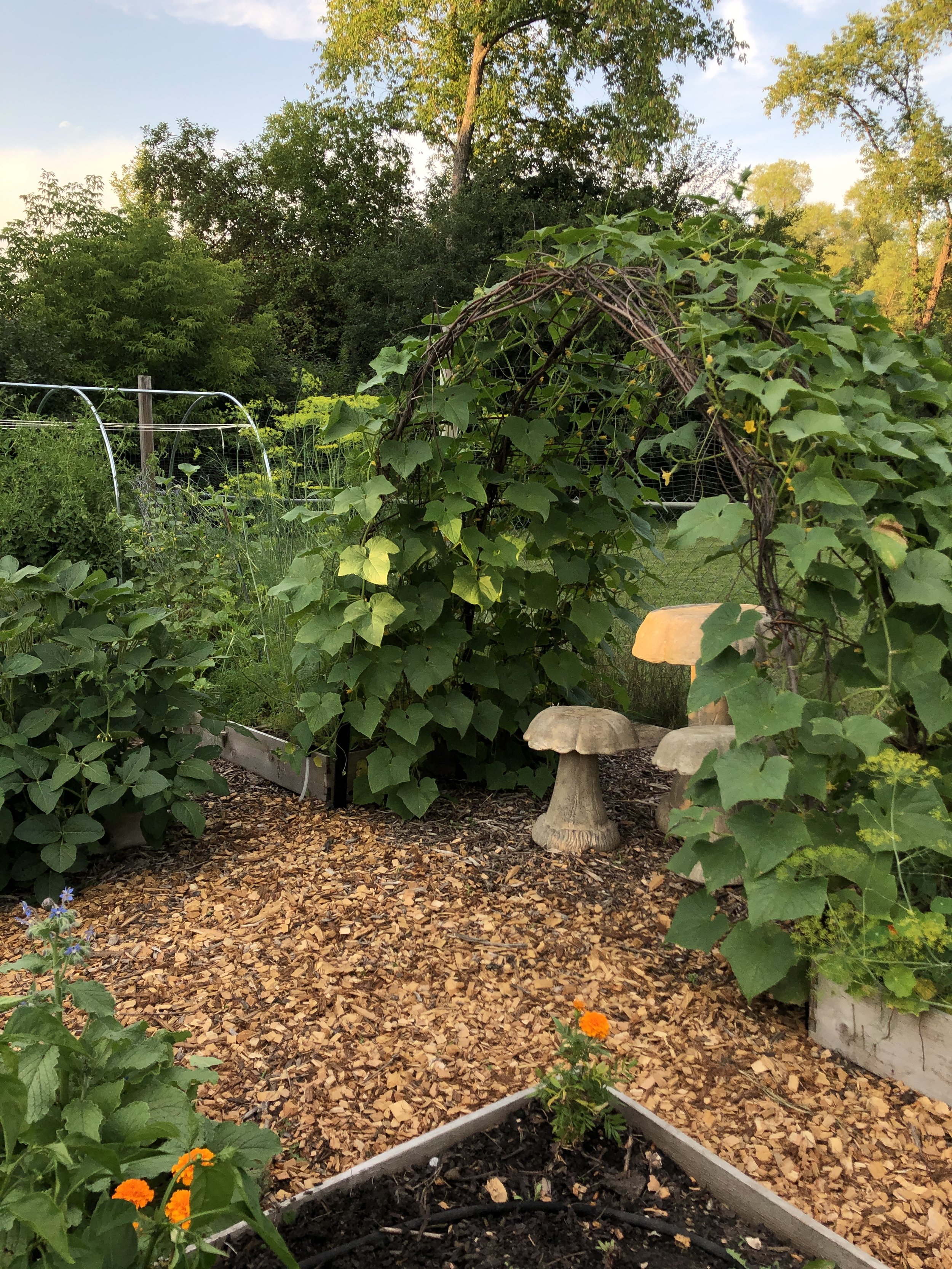Some of the most beautiful words this time of year are: “As soon as soil can be worked.” It’s a simple phrase in the planting instructions for a handful of plants that love the cold, and you can literally sow them directly into the ground as soon as the soil can be worked. This simply means that:
1) the ground is thawed, and
2) it has dried out enough to crumble in your hand instead of glop together like mud.
Working the soil when it is too wet is destructive to soil structure and also may cause your germinating seeds to suffocate and rot. No good. So making sure the soil is truly ready to be worked is important!
Below is a basic list of plants you can start right now (yay!), including planting instructions and a couple ideas for their use. The plants with an asterisk* are ones that will typically run their life cycle by the time you’ll be ready to transplant things like tomatoes and peppers into the garden. This means that with some planning, you can capitalize on space by planting these varieties in the early spring and another variety in their place come summer. As you can see in the photo above, it can be a good idea to save your early garden seeds in a “special” envelope (not special looking!) so each year they are ready to go!
Arugula* – Plant 1/4″ deep and 1″ apart. When plants are young, pull up some “baby arugula” and thin plants to 6″ apart. Arugula is a peppery tasting green great in salads, sandwiches and on top of pizza.
Beets – Plant 1/2 inch deep and 2″ apart. When plants are young, thin to 8″ apart. Beets have a sweet and earthy flavor. They are good raw – shredded or cubed small in salads – or cubed and roasted with some olive oil, salt and pepper. Even better, try adding them to a breakfast hash, or as a powerfully nutritious addition to fresh pressed juices.
Swiss Chard – Plant 1/2 inch deep and 2″ apart. When plants are young, thin to 8″ apart. Swiss chard is a green with a thick, edible stalk and large leaves, and the flavor is almost identical to beets. They work well in stir fries and skillet meals.
Carrots – Carrot seeds are extremely small – use a long straight stick to etch a 1/8″ deep trough in the dirt and sprinkle in the seeds, roughly 1/2″ apart, but don’t worry about being exact. Lightly cover with soil and pat down. Keep the area moist - carrots can take a week to germinate. When plants have sprouted, thin them to 3″ apart. (Carrot sprouts initially look like tiny blades of grass – wait a few days and you’ll see the characteristic lacy carrot leaves emerge, making them more recognizable). New ideas for using carrots might include roasting them with salt and a bit of honey for glazed carrots or trying them fermented – they’re delicious and kids love them too!
Kale – Plant 1/2″ deep and thin to 2 feet apart. You can sow seeds closer if you’d like to pick the young, tender plants for salads. Kale will continue to provide a bountiful harvest probably until it’s buried in snow. If you leave it in the ground, it may even revive the following spring! A very popular green these days, kale has a variety of uses – it’s great chopped and included in skillet meals or stir fries, oiled, salted and baked into kale “chips,” included in salads or thrown into a smoothie.
Lettuce* – Like carrots, lettuce seeds are also extremely small and barely need to buried. Once again, use a long, straight stick to etch a very shallow trough – about 1/8″ deep. Sprinkle the seeds in about 1″ apart and cover lightly. For loose leaf lettuce, thin to 6″ apart. If you are planting Romain or Iceberg types, thin to about 10″ apart. It’s great to have a little lettuce in the garden for the times you make a wrap or sandwich, and it’s a great medium for using your other early spring goodies, such as in a mint and pea salad.
Peas* – Plant 3/4″ deep and 2″ apart. Once sprouted, thin to 3”-4” apart. Snow Peas are great for stir fries and Snap Peas are wonderful for fresh eating. This is one of the most “substantial,” and in my opinion delicious, early spring crops, so you won’t regret planting a ton of them!
Radishes* – Plant 1/2″ deep and 2-3″ apart. Radishes develop quickly, and you can keep planting them every 3-4 weeks for an ongoing supply. They have a spicy flavor and are great in salads, for fresh eating or even roasted. And don’t miss out on the chance to have some fun carving decorative radish roses.
Spinach* – Plant 1/2″ deep and 6″ apart. You can sow the seeds closer together if you’d like to harvest “baby spinach.” Spinach is a versatile green – good in salads, smoothies, soups and other dishes.
If you would love more help getting started growing your own food, contact us through the button below!












